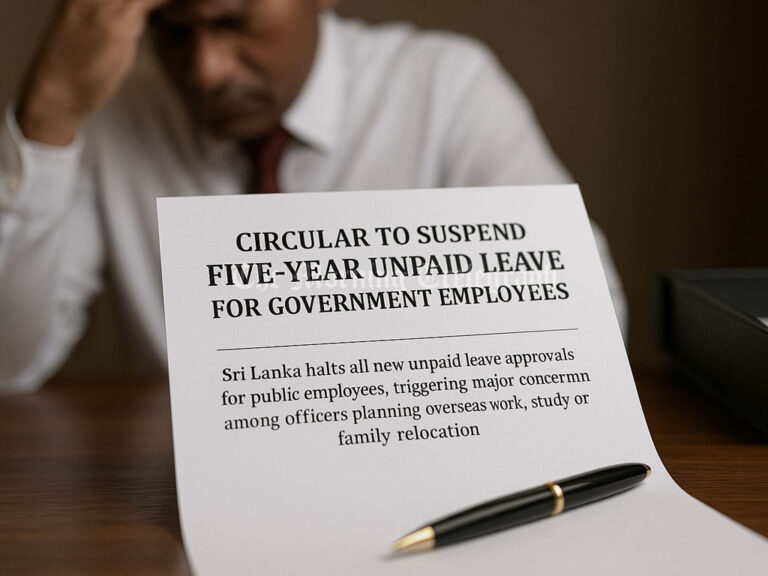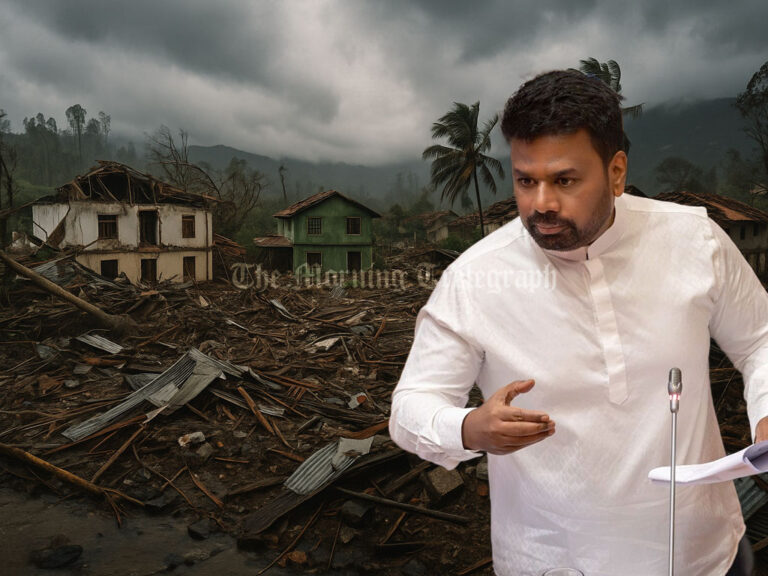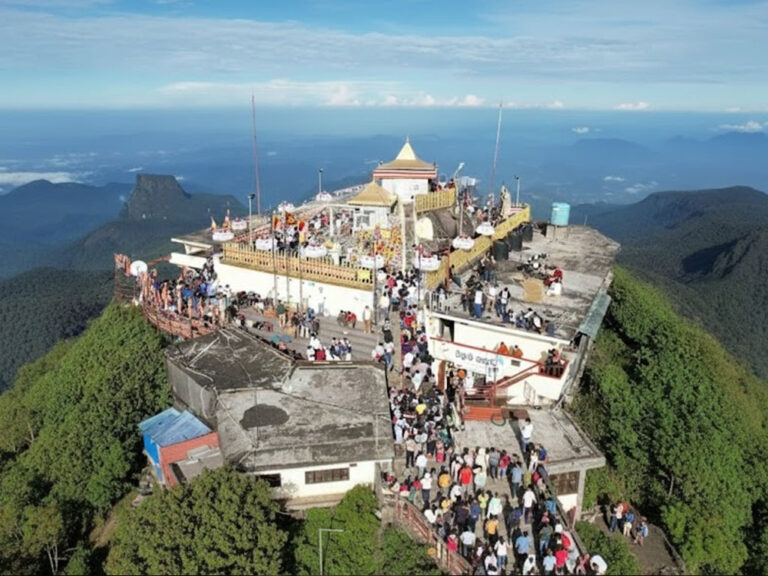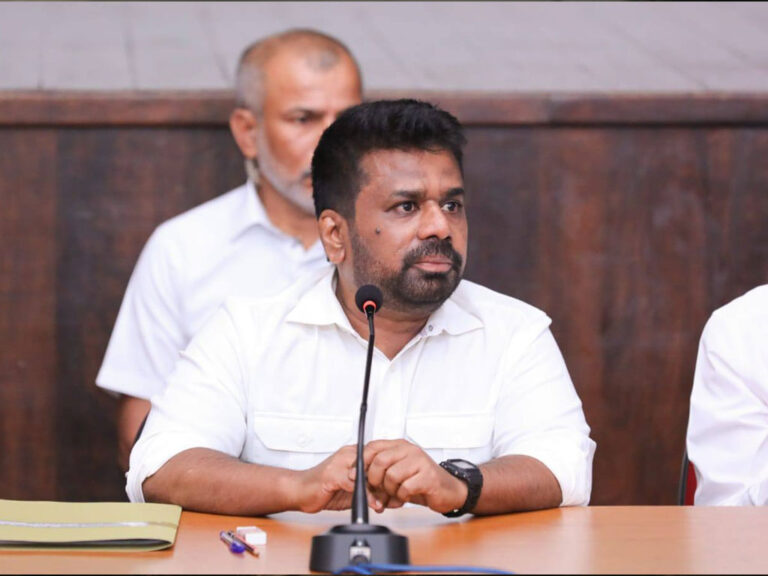
Although the government was reluctant to implement the recommendation to reduce electricity tariffs by 20% due to the intervention of the Public Utilities Commission, the Ceylon Electricity Board (CEB) and the government are now preparing to show that the CEB is suffering losses due to the reduction in electricity tariffs, says former Minister of Power and Energy, and United Republican Front Leader, Patali Champika Ranawaka.
He stated this while participating in a media conference held by the United Republican Front today (13) on ‘Continuous Supply of Electricity and the Energy Crisis’.
Puttalam Lakvijaya Power Plant and Power Cuts: Management Issues and the Truth
The power outage that occurred last Sunday (09) has led to ongoing power cuts. We state very clearly that such an event cannot happen at the Panadura grid substation simply because a monkey jumps on it. A system management unit in Pelawatte, Battaramulla, has been built at great expense, allowing incidents like this to be easily prevented. The system is designed to balance electricity consumption and provide power to the public 24 hours a day.
A major concern is why the Puttalam Lakvijaya Power Plant collapsed. There is no valid reason for such a failure, as the power plant has been operating for about fourteen years. Although there were initial balancing issues, they have largely been resolved. Even in the absence of external power demand, the plant should still be capable of sustaining itself. If every power outage in the country results in a collapse of the Puttalam power plant, it highlights a serious issue. This is not a problem of external interference or system imbalance but a matter of administration and management.
A Severe Attack on the Green Energy Sector
A letter from 2024 has recently surfaced, dated November 12, 2024, which warned about potential issues related to the absorption of green energy during holidays. This letter outlined eight conclusions, including the recommendation to control wind and solar power generation of more than five megawatts due to low demand.
During our tenure in the Ministry of Energy in 2010, with support from the Korean and Japanese governments, we built the first solar power plant connected to the national grid and also introduced rooftop solar panels. These were visionary steps that have brought the country to a point of self-sufficiency in solar energy. On days with good sunlight, solar power has been able to provide full electricity coverage. However, the CEB now claims this creates system imbalances, prompting calls for restrictions.
Moreover, the Hambantota District Development Committee has reportedly decided against allocating lands for solar energy projects. If this decision was made by the National People’s Power or the Janatha Vimukthi Peramuna government, it is a deeply shortsighted move that severely undermines the green energy sector. This is not just an administrative decision but an attempt to dismantle an industry built with significant effort and investment.
A previous bill granted the minister authority to gazette standardized power purchase agreements for projects below ten megawatts, but no such notification has been made. Reports suggest that limitations might be reduced to one megawatt, which would disrupt a well-established industry that contributes to addressing the country’s energy crisis and climate change concerns.
The reality is that wind and solar power cost less than the selling price of CEB electricity. This means these renewable energy sources are not only viable but also profitable for the CEB. Coal-fired power is more economical than diesel-generated power. Therefore, we question whether there is a deliberate attempt to undermine the renewable energy sector.
Giving the Mannar Wind Power Development Project to a Rejected Tender Bidder
The government continues to engage in large-scale tendering processes. Recently, 50 megawatts of wind power capacity was awarded to a company that was previously rejected in the tender process for the Mannar project. Additionally, another 145 megawatts are set to be tendered. Furthermore, discussions are underway to secure 500 megawatts of solar power with the Trincomalee company.
In 2023, the Chief Engineer and General Manager of the CEB presented a report to Parliament stating that 2,600 megawatts of wind, solar, and possibly small hydropower could be integrated into the system without imbalance. The Gotabaya Rajapaksa administration set a target for a 70% renewable energy-based power system by 2030. However, the current government seems intent on reversing this progress under the guise of system imbalances. This is a regressive move that could cause significant harm to the country’s energy future.
Has the CEB’s Expenditure Increased Due to the Tariff Reduction?
On February 5, the CEB’s generation costs amounted to 850 million rupees. However, following the February 11 incident, generation costs more than doubled to 1,750 million rupees. This increase is being used to argue that the tariff reduction has financially harmed the CEB.
We urge the government to take responsibility and act instead of merely issuing media statements. The current hydropower situation has been favorable since January 1. It is crucial to maintain this until the next monsoon. Mismanagement could lead to further issues in other energy sectors.
Coal Tender Issue and JVP Allegations
Question: When you were the Minister of Power in 2015, your name was mentioned regarding the coal allegation. The current Minister, Wasantha Samarasinghe, also commented on this. What is your response?
Answer:
This issue is often brought up by certain JVP supporters whenever we achieve something significant. In 2015, the CEB faced a loss of 4.5 billion rupees while selling electricity at Rs. 16.20 per unit. We reduced the price to Rs. 15, yet the CEB became profitable within 100 days by shutting down five expensive oil plants.
Regarding the coal tender, this was initiated under Minister Pavithra Wanniarachchi’s tenure. We modified it to select two suppliers instead of one and prevented a deal involving South African coal linked to Tamil diaspora groups associated with the LTTE. The final decision was made after Parliament was dissolved, and as ministers cannot interfere post-dissolution, President Maithripala Sirisena handled it.
The Bribery and Corruption Commission investigated these allegations and found no grounds to proceed. I have publicly challenged JVP’s Anura Dissanayake to a debate on this matter, but they continue to spread false claims instead of filing an actual case.
Sustainable Solutions to Overcome the Power Crisis
Question: What solutions do you propose to address this crisis?
Answer:
There is no actual crisis. The longstanding issue in Sri Lanka has been inadequate supply to meet demand. Now, we are being told there is no demand despite sufficient power plants. Creating demand through systematic management is essential.
The first step is ensuring the Puttalam coal-fired power plant can operate in no-load conditions. Technical agreements with China, signed under former CEB General Manager Fonseka, must be upheld. Instead of blaming previous administrations, the CEB must efficiently manage existing power plants.
Moreover, if power cuts occur due to inefficiency, the public deserves compensation. If mismanagement continues, the energy sector will face a more severe crisis by April. While no immediate problem exists, failure to act responsibly could lead to dire consequences in the future.
The government must ensure transparency in energy sector decisions, especially regarding tenders. Renewable energy remains a vital part of Sri Lanka’s future, and deliberate attempts to stifle its growth must be resisted. An independent investigation is required to address potential corruption in the Mannar wind power project. The future of the country’s energy sector depends on responsible management, fair competition, and a commitment to sustainable energy policies.




